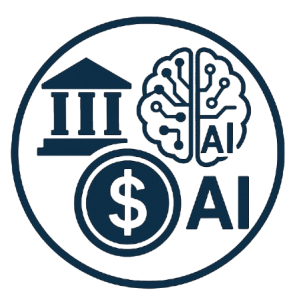Fiscal Policy vs. Monetary Policy: A Head-to-Head Comparison
Governments and central banks wield powerful tools to steer the economy: fiscal policy and monetary policy. While both aim to achieve macroeconomic stability, they operate through distinct mechanisms and are managed by different entities. Understanding the nuances of each is crucial for comprehending how economic growth is regulated and inflation is kept in check. This article delves into a detailed comparison of these two critical policies, examining their tools, governing bodies, and their respective impacts on the economy. See more on international economics if you’d like to broaden your understanding.
Key Differences in Implementation Tools
Fiscal policy, primarily managed by the government, revolves around government spending and taxation. Governments can stimulate economic activity by increasing spending on infrastructure projects, education, or defense. This injection of funds into the economy can create jobs and boost demand. Conversely, they can curb inflation by raising taxes, which reduces disposable income and subsequently lowers overall spending. Tax cuts, on the other hand, can incentivize investment and consumer spending, leading to economic expansion. Fiscal policy decisions often involve complex political considerations, as they directly impact various sectors and segments of society.
Monetary policy, on the other hand, is the domain of central banks. Their primary tool is adjusting interest rates. Lowering interest rates makes borrowing cheaper, encouraging businesses and individuals to take out loans for investment and consumption. This, in turn, stimulates economic growth. Raising interest rates makes borrowing more expensive, discouraging spending and investment, which can help to cool down an overheated economy and combat inflation. Central banks also utilize tools like reserve requirements (the percentage of deposits banks are required to hold) and open market operations (buying and selling government bonds) to manage the money supply and influence credit conditions. These actions are typically data-driven and aimed at maintaining price stability and full employment.
Governing Bodies and Independence
The implementation of fiscal policy is inherently political, residing within the realm of government. Decisions about taxation and spending are subject to legislative approval, often influenced by political ideologies, public opinion, and lobbying efforts. This political dimension can sometimes lead to delays or inefficiencies in implementing fiscal policy, as different political factions may have conflicting priorities. Furthermore, fiscal policy is often tied to specific electoral cycles, with governments sometimes prioritizing short-term gains over long-term economic stability to win votes.
Monetary policy, ideally, operates with a degree of independence from political influence. Central banks are typically structured to be autonomous, with mandates focused on maintaining price stability and promoting full employment. This independence allows them to make decisions based on economic data and analysis, without being unduly influenced by political pressures. While central banks are accountable to the government, their operational independence is crucial for maintaining credibility and effectively managing the economy. The Federal Reserve in the United States, for instance, enjoys a high degree of independence, allowing it to make decisions based on its assessment of the economic landscape. A brief look at current economic news might be helpful.
Impact on Economic Growth and Inflation
Fiscal policy can have a direct and immediate impact on aggregate demand. Government spending directly adds to the demand for goods and services, while tax cuts increase disposable income, leading to higher consumer spending. This direct impact can be particularly effective during recessions when private sector demand is weak. However, fiscal policy can also have unintended consequences. Excessive government borrowing to finance spending can lead to higher interest rates, crowding out private investment. Furthermore, tax increases can disincentivize work and investment, potentially dampening economic growth in the long run.
Monetary policy’s impact is often more indirect and takes longer to materialize. Changes in interest rates affect borrowing costs, which in turn influence investment and consumption decisions. Lower interest rates can stimulate investment in housing and capital goods, while higher interest rates can curb inflation by reducing overall spending. Monetary policy is generally considered to be more flexible than fiscal policy, as central banks can adjust interest rates more quickly and frequently than governments can change tax laws or spending programs. However, monetary policy can be less effective when interest rates are already near zero, a situation known as the “liquidity trap.” In such cases, central banks may resort to unconventional measures like quantitative easing to stimulate the economy. The effectiveness of each policy also depends heavily on the specific economic conditions and the credibility of the policymakers.
Comparing Effectiveness in Different Scenarios
The optimal choice between fiscal and monetary policy depends on the specific economic challenges facing a country. During a severe recession, when interest rates are already low, fiscal policy may be more effective in providing a direct stimulus to the economy. Government spending on infrastructure projects can create jobs and boost demand, while tax cuts can put more money in consumers’ pockets. However, if the economy is already growing rapidly and inflation is rising, monetary policy may be more appropriate to cool down demand and maintain price stability. Raising interest rates can curb borrowing and spending, preventing the economy from overheating.
In practice, fiscal and monetary policy are often used in conjunction to achieve macroeconomic goals. For example, a government might implement a fiscal stimulus package to boost economic growth, while the central bank keeps interest rates low to support investment and consumption. The coordination between fiscal and monetary authorities can be crucial for ensuring the effectiveness of these policies. However, conflicts between these two entities can undermine their efforts. For instance, if the government is pursuing an expansionary fiscal policy while the central bank is trying to tighten monetary policy to control inflation, the resulting policy mix may be counterproductive.












